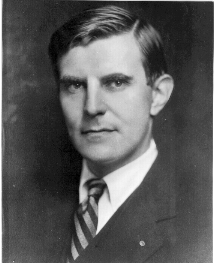John G. Winant
PRACTICAL PROGRESS UNDER THE SOCIAL SECURITY ACT
Excerpts from Speech by John G. Winant Washington, D. C., September 16, 1936
[John Winant was the Chairman of the original Social Security Board.]

John G. Winant
The act became law on August 14, 1935, and appropriations implementing the Act were made available six months ago. We have gone forward in accordance with the schedule laid down in the law. As you know, the provisions of the act which the Social Security Board administers fall into three categories; First, public assistance; second, unemployment compensation; and, third, Federal Old-Age Retirement Benefits. Under the act, it was the intention of Congress that this wide-spread and coordinated program should first begin to function with respect to the public assistance provisions. These are the provisions which set up a system of Federal grants-in-aid to the States for aid to needy aged persons, to needy blind persons, and to dependent children. In addition, other aspects of the program not administered by the Social Security Board were scheduled to go into effect at once. These are the maternal and child welfare provisions administered by the Children's Bureau of the Department of Labor; the public health provisions administered by the Public Health Service in the Treasury Department, and the vocational rehabilitation provisions administered by the Office of Education in the Department of the Interior.
Individual State action is necessary to receive Federal cooperation and aid under all provisions of the act excepting "OldAge Benefits", which is a Federal function.
Every State in the Union is now cooperating in three or more of the welfare programs set up by the act. Also, thirty-nine States and the District of Columbia are now participating in the public-assistance provisions of the act administered by the Social Security Board--which includes aid for needy aged persons, aid for the needy blind, and aid for dependent children.
What is the record of acceptance with respect to unemployment compensation in this first year of the program?
Briefly, this: Whereas one State only had an unemployment compensation law in operation prior to the passage of the Social Security Act, fifteen States and the District of Columbia now have such legislation. These sixteen laws cover more than 8,000,000 Workers, or some 45 percent of the estimated total number of workers to be covered if all States had laws similar in coverage to those already passed.